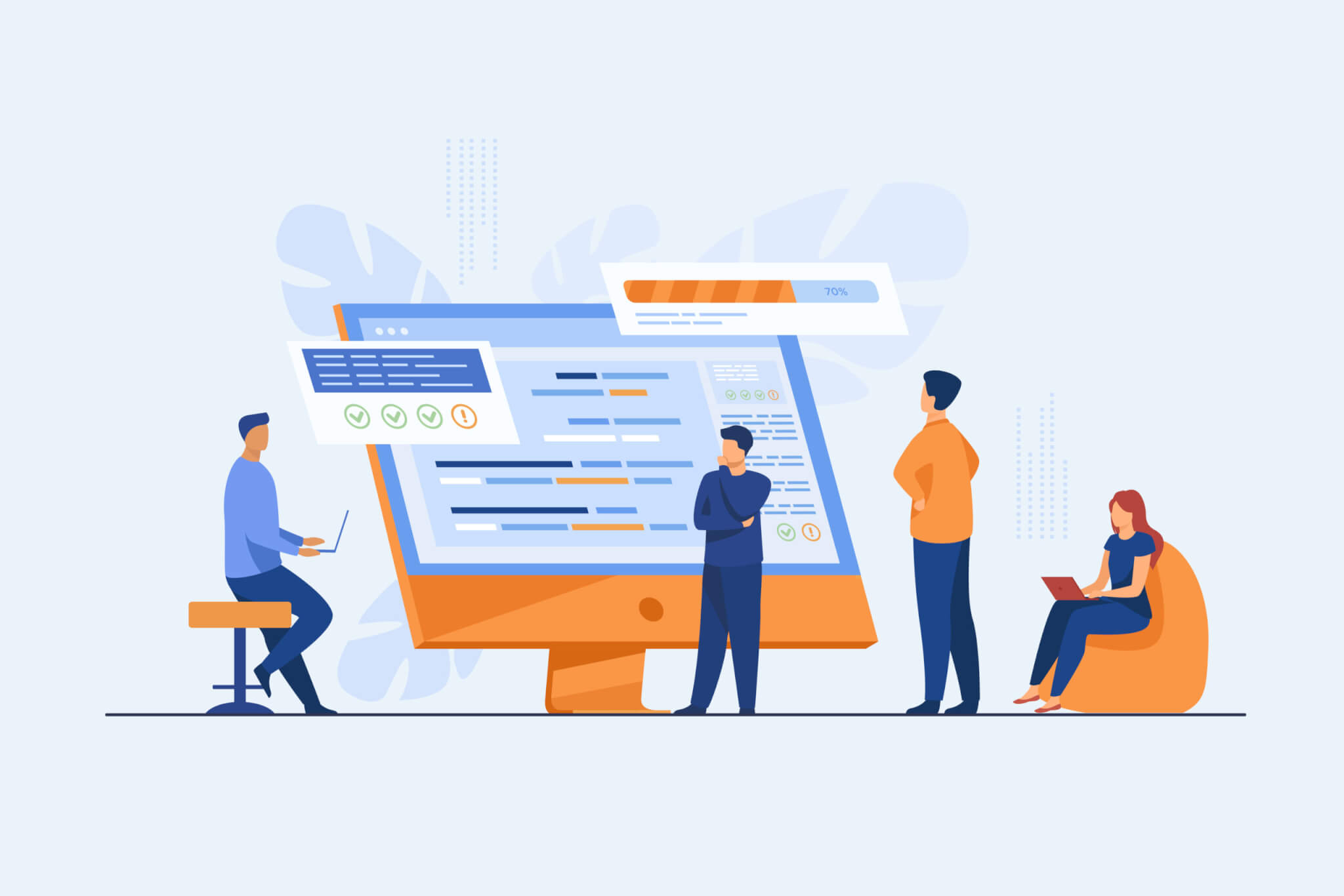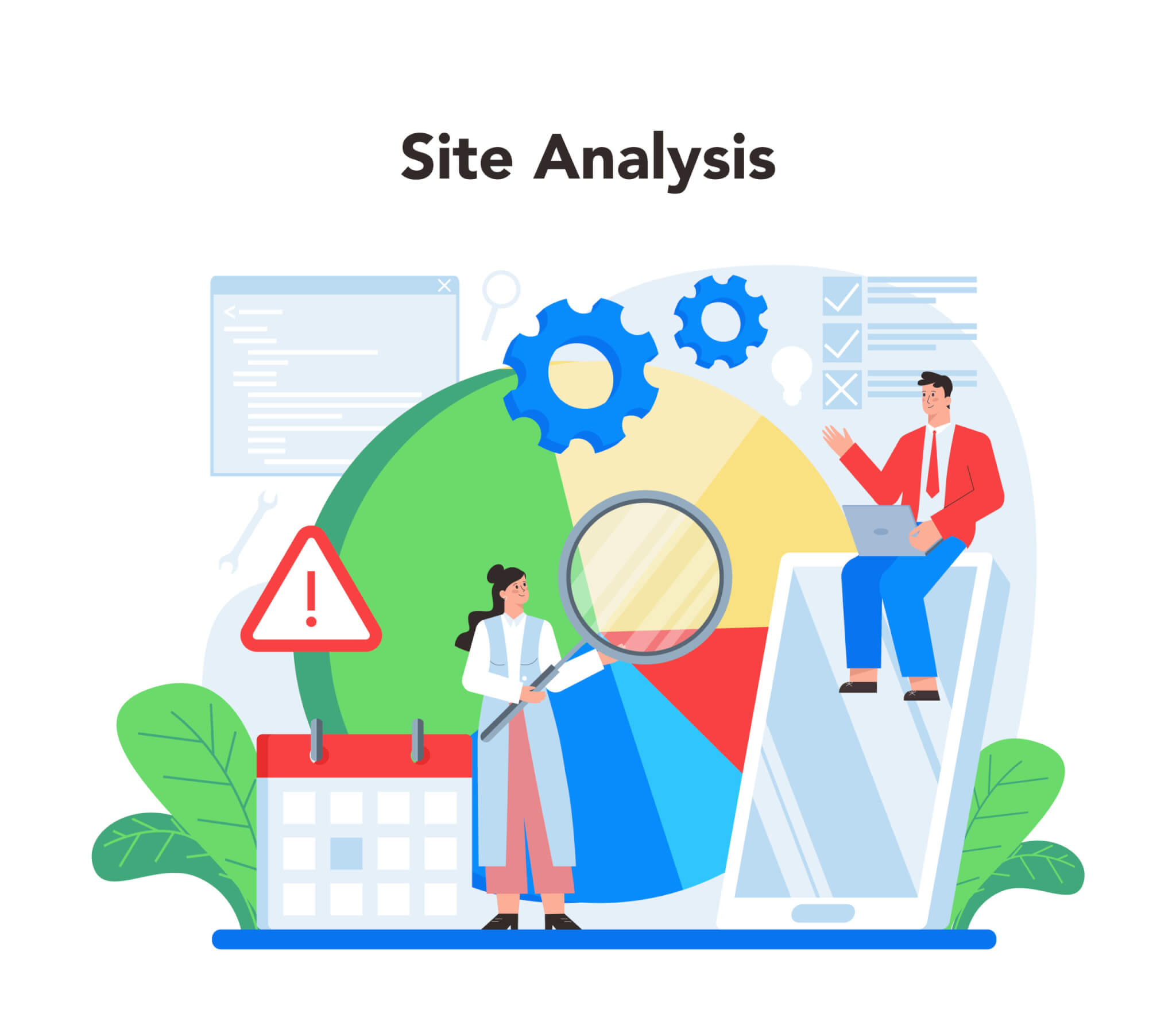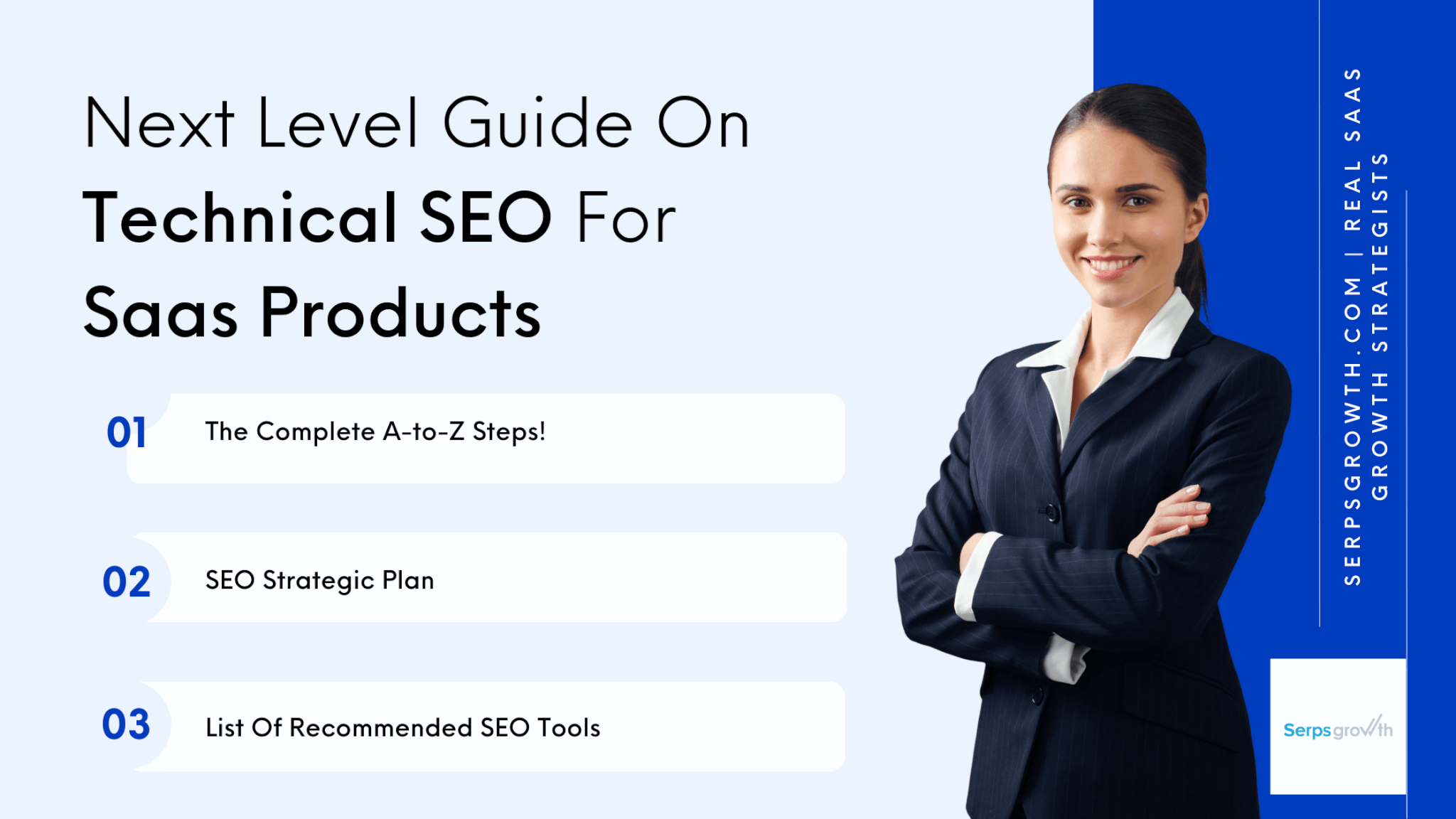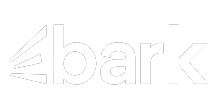What is Software As A Service(SaaS) & How do you perform SEO on it?
SaaS (Software-as-a-Service) refers to providing a service online via the Internet on demand.
It typically involves being able to access a software program on a remote server and use it as if it were installed locally.
SaaS companies would need SEO after the project discovery phase in order to have their product seen by potential customers and sell their services. In short, SEO is important for every SaaS product firm, especially when it comes to securing saas funding!
We all can admit that SaaS Marketing is a rapid and affordable way for businesses to capture the market for their product.
Whereas SaaS SEO can be the key to making your SaaS marketing campaign work, so you should start by looking at your Google Analytics data.
It’s recorded that organizations taking advantage of cloud software services (Saas) applications since 2015, has increased drastically, and an average of about 110 software is being used in every organization since then.
Source

SaaS SEO Plan
We really need to see that a website that’s not optimized for search engine traffic could be costing you a lot of potential leads. We have carried out a checklist covering everything from page speed to mobile-friendliness, so you can ensure your website is fully optimized for search.
Things to ask before crafting your Saas SEO Strategy
- Is your site crawlable and indexable?
- Does the website load fast?
- Are we optimized for mobile?
If any of these questions leave you with a nagging doubt, worry not. We are going to help you answer them.
“A good Saas SEO Strategy is focused on making your website as easy to find as possible.”

Vimeo (Saas) video platform successfully captured 108 million U.S. dollars in revenue with thier marketing only during the third quarter of 2022.
Source
Technical Saas SEO Checklist
Here are some things to consider when crafting your Saas SEO Strategy:
- Site Audits.
- Keyword Strategy.
- Improvised CTAs.
- Strong Core Web Vitals.
- Quick Caching.
- SEO Analytics & Tracking.
- Widespread Guest Posting.
- Focused International SEO.
- Internal Linking Optimization.
- Go for a Category-based URL Structure (If required).
- Improvised Schema Markup.
- Enhanced User Experience.
- HQ Link Building.
Step #1
Site Audits
The first thing on your list should be starting with An SEO audit that provides a comprehensive review of your website from a technical, user-friendly, and content perspective.
Here are a few of the fundamentals that you should be looking at;
- Your Domain’s presence across the internet. Handling Indexation and crawl rate.
- Updating Robots.txt file.
- Carrying out Missing title tags/descriptions.
- H1 tags for title tags.
- Eliminated 404 errors and redirect issues.
- Url structure that is user-friendly, intuitive, and organized.
- SSL certificate installed on all applicable pages.
- Eliminate orphaned pages or rename existing pages to eliminate duplicate content on individual sites.
- Eliminate JavaScript on pages not needed by search engines.
And uncountable other factors that should be taken into consideration when carrying out a brief saas audit.
Make sure that your site is set up for search engine optimization and that all areas of improvement are identified.
Now create a comprehensive report detailing your findings and recommendations.
Start by fixing any technical problems you are having with your website, update metadata on all pages and create or optimize your sitemap.
Tools That We Recommend;
Google Search Console: For Search Queries and Other Site Data.
Google Analytics: To identify & measure site performance and user behavior.
Page Speed Insights: To test web/app speed.
Screaming Frog: For technical audit.
Ahrefs: Preferred For Backlink Audit.
Grammarly: To check for Plagiarism, detecting tone and Grammar misspellings.
Technical SEO: For generating schema markup.
Alydasolis: For generating a hreflang tag.
Bonus: Best Tool for JavaScript Rendering* https://www.oncrawl.com/,)
Step #2
Keyword Strategy
When customers type in a query, search engines are designed to show results that are most likely to meet their needs.
The keyword strategy helps you identify the right consumer groups to target and the best keywords to rank for within those groups.
This column builds on your keyword research by offering specific advice based on common consumer behaviors.
Think of user intent as the reasoning behind what someone is looking for with the search engine.
The information that the search engine has gathered about how users behave on these pages has helped it improve over time to better understand what people are looking for in a website.
Intentional keywords are used to tell Google exactly what to pull up when users type in a certain term into its search box.
The Important Keyword Strategy Metrics that you should be looking at most of the time are;
– Keyword Difficulty/Density.
– Search volume
– Search volume over time
– CTR (click-through rate)
– CPC (cost-per-click)
– Keyword Trends
Keyword strategy is the most important part of SEO. When a user types’ quick recipe,’ it’s because they’re looking for a specific type of recipe.
Initially, the search engine will throw out a few results, with recipes that take from just a few minutes to a few hours to make.
Slowly, and by seeing each user’s behaviors on each page, the search engine will understand that by ‘quick recipe’, the user means recipes that are about 15 minutes to make.
Tools That We Recommend;
Step #3
Improvised CTAs
Your call to action is one of the most important elements of your website. It is the only way for people to know how your site actually works.
Perhaps even more importantly, it’s a way for you to let users know that there’s something REALLY special here, and they should take some sort of action immediately!
Two Important Things to Consider for CTA’s
- Positioning.
- Design.
This is the most critical portion of your whole page. If you want to get the highest rankings, then you need to make sure that your CTAs are perfectly designed and positioned.
Step #4
Core Web Vitals
Having a great site is one thing, but your site needs to perform well to be successful. Learn how to optimize for the core web vitals that will make sure you’re on track for faster load times and better user experiences.
To get the best load times, you need to optimize for core web vitals. Here’s a list of some of the best practices that will help you achieve better core web vitals for your site.
– Rich Media and Script Compression.
– CSS Sprites.
– CDNs.
– Server Speed Optimization.
– Parallel Downloads and Minify.
Step #5
Caching
Caching web content is an important part of web performance optimization.
Caching web content improves the responsiveness of your websites by reducing the load on backend servers and network congestion.
Get the most out of caching through your hosting provider with huge cache sizes.
If you use a popular CRM like WordPress, you can add plugins to your site to do the same for your site.
Step #6
SEO Analytics & Tracking
Take control of your SEO efforts with Google Analytics & Search Console. If you’re looking to track marketing performance and metrics, Google Analytics is your best bet.
It allows you to set up key performance indicators(KPIs) like goal tracking and custom reports to measure your success.
However, if you’re working on SEO, you also need to use their Search Console to monitor organic search traffic for your website.
Step #7
International SEO
Broaden your reach and tap into new demographics with International SEO.
International SEO is the process of optimizing your website so that search engines can easily identify which countries you want to target and which languages you use for business.
SEO companies can help with International SEO by creating localized website content (based on the target country), ensuring your website is optimized for local search terms and keywords, and helping to rank you in the major international search engines for these localized versions of your site.
If you want to bring in new customers from overseas or if your business interacts with consumers from different countries, then international SEO is the solution. With the right plan in place, you can ensure that your website’s content and structure are optimized for different languages and markets.
Step #8
Internal Linking Optimization
Internal links also connect your content and give Google an idea of the structure of your website. You can use link trackers to aid in your link management and optimization for the best results. Likewise, you can establish a hierarchy on your site, allowing you to provide the most important pages and posts with more link value than other, less valuable pages
Step #9
Go for Category-Organized URL Structure
A clear, accurate URL structure is essential to make your site easier to navigate and make it search engine friendly.
Follow these best practices for URL structure to create the most effective website navigation possible.
URLs that are consistent and properly formatted can not only increase your SEO rankings but also help your traffic to easily go through your site.
Keyword-rich URL structure also makes it easy for users to navigate your site.
While It is best practice to name your categories with lowercase letters and make sure that the terms in your URLs are accurate.
Additionally, using hyphens rather than underscores will maintain consistency across your site.
Step #10
Schema Markup
Schema Markup can help your website appear more prominently in search results and on social media platforms. Understanding the different types of markup is important before choosing one to implement.
Schema markup allows you to provide search engines with information about your website. This can include everything from the business name, address, and phone number to product categories, descriptions, and prices.
Once your site has been marked up with schema markup, you will be able to show up in search results for relevant terms related to those terms.
Schema markup creates a better search experience by helping Google understand what your page is about.
Our eCommerce clients see a 17% increase in click-through rate from shopping ads after implementing product markup, while real estate sites see a 4.5% increase when using event schema to highlight open houses and other events.
Use Schema markup to understand your audience and provide relevant information right on the results page.
From product-rich snippets to answering commonly asked questions to events listed on a venue’s website—schema can give your business a boost in SERPs.

Technical Saas SEO Strategy Action Plan
A well-executed SEO strategy can transform the performance of your website, enabling it to compete for searches that were once left behind.
It’s a plan to improve your web pages to capture more organic traffic from search engines.
Crafting an effective strategy requires a significant investment of time, energy, and resources.
By delivering an effective presentation that highlights the significance, benefits, and expected outcomes of improving our web pages to capture more organic traffic, I will effectively convey the value and necessity of this strategic initiative.
And like any other kind of marketing campaign, you want to ensure that you don’t invest more in tactics than what they’re worth, so you can achieve a positive return on investment (ROI).
3 Key Tools to Develop Actionable Saas SEO Strategy
A solid SEO strategy is essential for any website. Use this tool to develop a complete action plan for your website, and you’ll see significant improvements in search traffic.
SEO is a crucial aspect of digital marketing and advertising. If you work smart to craft an SEO strategy that will help you get ahead of your competitors & things will keep getting better for you.
Content Optimization
Content Optimization is the magic ingredient that has turned so many SaaS businesses into magnificent successes. A solid content strategy is at the heart of profitable web marketing and can have a profound impact on your company’s revenue and growth.
At Services for SaaS, we believe that a website is the most direct way to communicate your message to potential customers. To be successful, a website should have content that solves customer problems, engages the audience, and provides them with solutions they didn’t know they needed.
Entity Optimization
The role of entities in SEO is huge. With time, Google has become smarter in identifying the true meaning of keyword searches and queries. It has now shifted from term-based search to entities, where it understands the meaning behind keywords or queries and organizes the search results accordingly.
Get the most out of your SEO campaigns by optimizing your entities, such as products, services, and clients. In this course, we will cover how to add, update, and delete products, services, and clients right from the dashboard.
Entity Optimization is a way of adding additional context and relevance to the content. By categorizing ideas into entities, you can add new meaning to your content by integrating verified semantic elements in the web infrastructure, spot ambiguous language in the content, and engage searchers’ interests in context.
Duplicate Content
Duplicate content can cause several technical SEO issues and lower the quality of your website. It also confuses search engines, making content more difficult to find on your site.
Visitors look at duplicate content and assume that all URLs are of equal value when in reality, only one URL is relevant for a search query.
Duplicate content also creates conflicting signals to search engines, preventing the display of your website’s most valuable information and eliminating chances to rank well.
Thin Content
This content is considered to be the polar opposite of high-quality content since it’s missing everything you need to improve your site’s authority in the eyes of Google. So after reading, make sure that the content on your pages is relevant to your user intent and offers them what they are searching for.
Thin content is a problem because it leaves users wanting more. In addition to that, thin content will often result in poor rankings or no rankings at all.
Link Building Strategies
Before we delve into what link building is and how you can strategize to get the most out of it, let’s do a quick history lesson. What set Google apart from others when it launched back in 1998 was how it used links to rank pages. For Google, the number of links linked to a page was a sign of that page’s expertise, relevance, and trust it had in the industry.
After more than twenty years, links are still a great indicator of expertise, and search engines are still using them to decide which pages should rank higher on SERPs. Although, clearly, Google has gotten a lot smarter. Today, it uses so many more indicators to crawl links and determine their relevance, organic nature, and authoritative ‘juice’ it assigns. If you’re forcing links in as many places as possible, it can actually do your website more harm than good.
Unlinked brand mentions
Finding unlinked mentions of your brand on various corners of the internet can be a great link building method. Unlinked brand mentions are all about reaching out to website owners who have mentioned your brand but didn’t include a link. You can set up a Google News alert to regularly find websites that are writing about you and check if they include a link or not.
Linked brand mentions
This tactic involves reaching out to websites that have linked to your homepage and asking them to change the link to a more relevant page on your website so you can capitalize on higher-quality referral traffic.
Guest posting
Guest posting is a classic part of most SEO experts’ link-building efforts. As such, it’s one of the most predictable ways to build links.
Manual query to use on Google search.
"Keyword" + Write For Us***
Hi,
Hope everything is well,
Subject: I am interested in writing a guest post on XYZ Company.
I’m trying to write a lot of guest posts this month and have some big ones scheduled, and I’d like to contribute to XYZ Company.
I came to know about XYZ Company through the XYZ community that you contribute to. So, I quickly checked to see if you guys are willing to accept any guest authors.
Please send me any writing guidelines so I can write around those and provide any topic that you would like to get published on your website.
Looking forward to hearing from you,
Best Regards,
***
Podcasting
It actually works similarly to guest posting: most podcasts have a website. So, when you speak on a podcast, they’ll publish it on their website afterward and include links back to the websites that you mentioned. Odds are, yours will be on the list.
Roundups
Roundups (also known as resource pages) are collections of top tools or resources on a specific topic. For example, “top 20 design tools” or “top survey tools.”
Broken links
Broken link building is a tactic where you find a broken link on a website within your target niche (this may also apply to certain nofollow links if you’re willing to get creative). If a website removes a blog article that was being linked to, then this is a broken link.
CEO Interviews
Interview link building is similar to podcast link building. It consists of creating a prospect list of websites that have previously interviewed SaaS founders and other experts from SaaS companies to ask them if they want to interview your CEO.

Infographics
A few weeks ago, I got this LinkedIn message from someone at another SaaS company, asking me if I wanted a free infographic for one of my blog posts:
They didn’t explicitly say it was a link building campaign but framed it as a “we’ll help you if you can help us. “
This is a powerful link building tactic because you are offering something of high value that will add value to someone else’s article, and you are asking for something fairly easy in return: quality links.
Image credit
An interesting SaaS link building tactic is to see who has used one of your website images and ask them for photo credit in the form of the link.
Product reviews
Product review link building involves reaching out to bloggers in your niche and giving them 3 months of your product for free in exchange for a review write up on their website within 2 weeks of gaining access to your SaaS tool.
Integration partners
When working with an integration partner, be sure to:
Make sure they add a link to your integration directory listing.
Write a guest post on their blog with a contextual link back to a key page you want to push, and make sure they use your target keyword as anchor text, of course.
Help A Reporter Out (HARO)
Help A Reporter Out is an online tool that gives journalists sources of information for their upcoming stories. In exchange for this information, they are likely to link back to you in your author section on their articles. While this can be mixed as to whether you’ll acquire nofollow links or dofollow links, either way, your website will be featured and linked to a useful source, driving organic traffic to your platform.
For example, SaaS brands have links from websites such as Forbes and Inc.com.
Q&A Sites
Scratch your prospect’s itch by solving their problems on Q&A sites such as Quora and Yahoo! Answers.
When thinking of the strategies your business should take on as you build a natural link profile, there are a few things to keep in mind. Remember that it’s not about how many links your website has- in fact, your domain authority depends more on the quality of those links and the way your internal linking structure works.
Opting For User Friendliness
User Interface
Properly set up and monitored, a user interface can have a significant impact on your site’s performance.
Technical issues can have a negative impact on a site’s UI and user experience.
For instance, at times, the content will not display properly, a CTA button may not work, or your main conversion page may not get picked up in search results.
You should check for indexing issues, robots.txt, duplicate content, content display issues, structured data errors, and code errors that reduce the effectiveness of your user interface.
Simple fixes can help you eliminate errors that can result in lower site rankings and a negative user experience.
For instance, you may have duplicate copies of your main product page appearing in search results.
This can lead to users landing on the wrong page or seeing incorrect information.
Luckily, there are simple tools that can help identify these issues, such as those from Majestic or Moz.
Usability
One of the best ways to spot technical errors is through usability testing. During these tests, webmasters recruit people to see how they interact with their website elements. They observe where the user struggles, what confuses or frustrates them, or whether they run into an impediment. The goal is to find issues before they happen in order to prevent frustrating users, keep them on your site longer, and increase conversions.
Navigations
As your website grows, so does the amount of content on it
Create a content hierarchy – breaking the content into broad categories and then making narrow subcategories.
Optimizing your site for search engines is not just about creating a site that’s simple and clean.
Pop-Ups
In today’s world, pop-ups are a prominent source of irritation for customers. So much so that many people use adblockers to avoid having an excessive amount of pop ups in their browsers. Websites with excessive interstitials (pop ups) will be marked as being intrusive by Google.
They can be used as effective means for advertising and delivering messages to target audiences. However, they also have their drawbacks and, therefore, should be used with caution to avoid hurting a brand’s reputation.
In short, use pop-ups for marketing purposes, but avoid the intrusive ones. Pop ups should be non-intrusive, easy to dismiss, and have minimal effect on the user’s navigation.
Trustworthiness
Here are a few examples of user interfaces that communicate trustworthiness.
Design Quality
When done correctly, factors such as site organization and visual design can increase a site’s trustworthiness. An increased number of broken links, typos, and other errors, on the other hand, quickly erode a site’s credibility and communicate to the visitor that the website lacks attention to detail.
Visitors appreciate websites that are upfront about all of the information they are looking for. For example, they want sites to provide contact information and customer service information upfront.
Similarly, users expect upfront disclosure of shipping charges on eCommerce websites.
Correct and Up-to-date Information: Sharing accurate and up-to-date information indicates that the website is a domain authority.
Connected to Authority Publications
When a website has backlinks from and outgoing links to authoritative websites, it gives users confidence that the information they’re reading is coming from nowhere. This significantly improves the site’s credibility.
Bonus
ORM
Online Reputation Building & Management
Online reputation management is the process of controlling what people see when they search for your business. By monitoring your digital footprint, you can identify and respond to any negative content. You learn how to handle negative feedback so that it doesn’t impact your reputation and negatively affect future sales.
You can always work on improving and managing the way your brand is perceived through social media.
This can take many forms, and you’ll want to be sure to understand what you want before diving into this process.
We handled the online reputation for a firm in New York a few months back, where they faced issues with negative comments and false knowledge about the brand they were running, and the manager seemed very stressed as the customers assumed they were committing fraud and got away. We took care of it and carried out a case study on our site, which you can see here.
Lastly, don’t miss out on off-page SEO, which involves promoting your content on social channels and email and earning backlinks through outreach.
Frequently Asked Questions (FAQs)
What is included in technical SEO?
Technical SEO includes all the technical aspects of a website that ensure that modern search engines properly crawl, render, and index the content on it.
At times, the scope of technical SEO can be bewildering because it encompasses all the technical aspects of your website, from hosting and website performance to meta robot tags and XML sitemaps.
But technical SEO allows the search engines to see your website as a high-quality resource and promises users of a great UX when they visit your site. All this ensures that your website is crawled, indexed, and rendered correctly.
What’s the difference between technical SEO and on-page SEO?
Technical SEO includes all efforts done to ensure that the search engines crawl and index your content effectively.
In other words, it includes SEO tactics applied to the non-content aspects of the website.
On-page SEO is primarily concerned with the content on a page. It encompasses every tactic used to optimize the content, whether it’s researching and including relevant keywords or ensuring that the user experience is at par with the visitor’s expectations.
To summarize, here’s the difference between technical SEO and on-page SEO.





